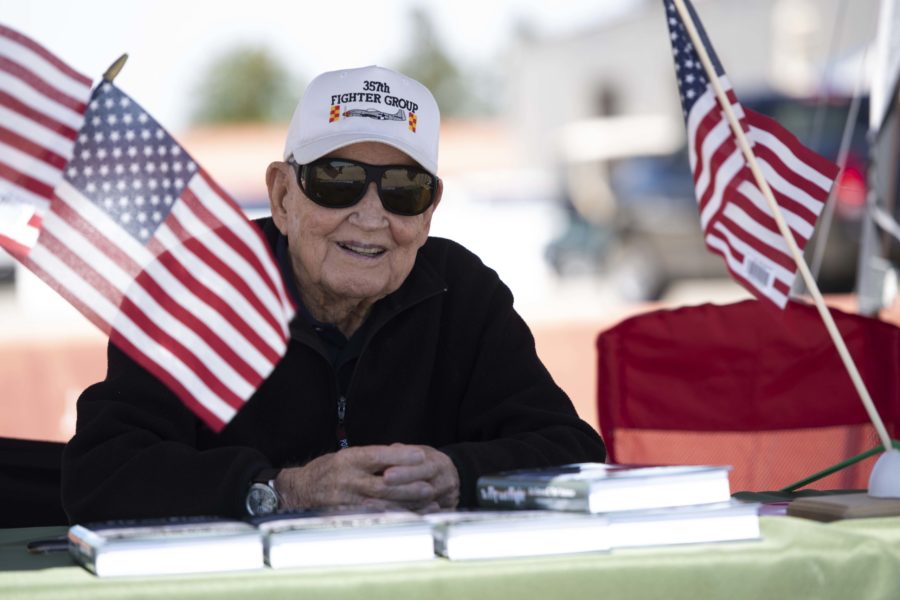Clarence E. “Bud” Anderson, the only living American triple ace pilot, was honorarily promoted from colonel to brigadier general Dec. 2, in a rare and historic ceremony presided over by Air Force Chief of Staff Gen. Charles Q. Brown Jr.
At the Aerospace Museum of California just outside Sacramento, Calif., Brown called Anderson, 100, a “wrecking ball” of a pilot who “many of us probably wouldn’t want to have … behind us, shooting us down.”
And in his own remarks, Anderson said that it “just truly blows my mind to see the Chief of Staff himself come to do this. It’s a little bit overwhelming.”
In order for a retired member of the military to receive an honorary promotion, Congress must either pass a law, or a member of Congress must request a review from the Secretary of the department in which the service member served.
Such instances are few and far between. In late 2019, Congress included honorary promotions for Col. Charles McGee of the famed Tuskegee Airmen to brigadier general and for Lt. Col. Richard “Dick” Cole of the Doolittle Raiders to colonel in the 2020 National Defense Authorization Act. In a few other select cases, Airmen missed out on a promotion for administrative reasons and were promoted years later.
Anderson, for his part, carries legendary status in the U.S. Air Force as one of only 14 living U.S. fighter aces out of 1,447 who have been recognized. He is also the only one left to have registered 15 or more kills, making him a triple ace.
Anderson, 100, was credited with 16 1/4 aerial victories in World War II, flying a P-51 Mustang he called “Old Crow”, after the brand of whiskey. Over the course of two tours in the European theater, Anderson flew 116 missions for the Army Air Forces.
After World War II, Anderson became a test pilot for the Air Force, flying more than 100 kinds of aircraft. He then commanded a wing and flew combat missions in the F-105 Thunderchief during the Vietnam War. He retired in 1972 at the rank of colonel with a long list of decorations, including two Legion of Merits, five Distinguished Flying Crosses, the Bronze Star, 16 Air Medals, the French Legion of Honor, and the French Croix de Guerre.
Indeed, Brown noted that in reading over Anderson’s record, he came across one evaluation he found “most telling.”
“‘He has the experience and the potential for advancement to positions of greater responsibility, and I consider him general officer material,’” Brown said, quoting the note, then adding, “So we’ve come full circle.”
Brown and Anderson had met before the Dec. 2 ceremony, the Chief of Staff noted. As a student at Air Command and Staff College, as commander of Pacific Air Forces, and as CSAF at the Oshkosh air show, Brown spoke with Anderson, who was already firmly entrenched as a famed and decorated pilot.
“Today’s number four,” Brown said. “And so I’m so glad that our paths have crossed so many different times.”
Now a general officer, Anderson kept his remarks at the ceremony brief.
“I usually have a short talk and a long talk,” Anderson said. “And the short one is ‘Thank you,’ and the long one is ‘Thank you very much.’ This event exceeds that phrase.”
In 2019, Anderson spoke with Air & Space Forces Magazine, recounting how he trained in P-39 Cobras, then learned en route to Europe that he’d be among the first combat pilots in the P-51. He also told the story of how he led P-51s (the best American fighter) against BF-109Gs (Germany’s best fighters) in a pitched, four-on-four battle.
